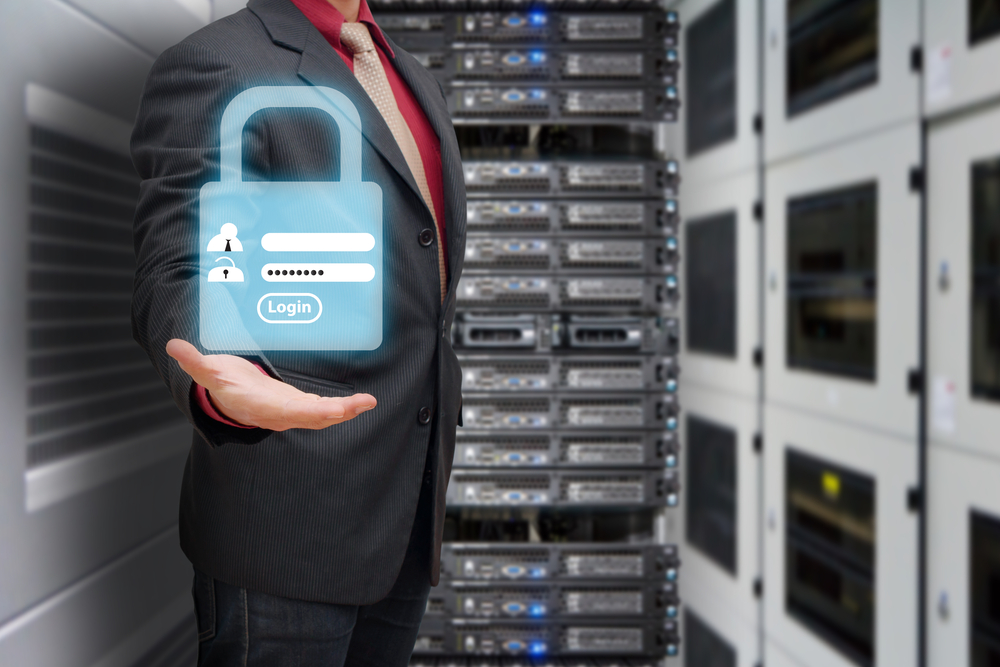Imagine a bank vault protecting treasures worth millions. Data center security works in a similar way, safeguarding sensitive digital assets that power businesses and services worldwide. With cyberattacks becoming more sophisticated, ensuring robust security measures is no longer optional; it’s a necessity.
Data center security encompasses physical and digital measures designed to protect infrastructure, networks, and data from threats such as breaches, theft, and natural disasters. It emerged as a critical priority as data centers evolved into the backbone of global operations. From biometric access controls to advanced encryption protocols, modern security strategies aim to mitigate risks and ensure uninterrupted functionality.
Sources like IBM and Cisco highlight the importance of layered security approaches, combining proactive monitoring, incident response, and compliance adherence to protect sensitive information. In today’s interconnected world, data center security is foundational to maintaining trust, ensuring business continuity, and supporting the digital economy.
Here’s a table summarizing the key aspects of Data Center Security:
| Aspect | Description | Key Technologies/Strategies | Importance |
|---|---|---|---|
| Physical Security | Protecting the physical infrastructure to prevent unauthorized access, theft, or sabotage. | Biometric authentication, surveillance cameras, secure access controls, perimeter defense, on-site monitoring. | Prevents unauthorized access, theft, and sabotage; ensures operational continuity. |
| Network Security | Safeguarding the network infrastructure to prevent cyberattacks, such as DDoS and ransomware, from disrupting operations. | Firewalls, Intrusion Detection Systems (IDS), Virtual Private Networks (VPNs), continuous network monitoring, real-time threat detection. | Ensures secure data transmission and protects against cyber threats. |
| Data Protection | Ensuring the confidentiality, integrity, and availability of data. | Advanced encryption, backup solutions, disaster recovery plans, compliance with regulations like GDPR, HIPAA. | Protects sensitive data from breaches, loss, and ensures compliance with legal requirements. |
| Data Center Tiers | Classification based on infrastructure, performance, and security capabilities. | – Tier I: Basic level with no redundancy. – Tier II: Redundancy in power and cooling. – Tier III: N+1 redundancy, advanced security features. – Tier IV: 2N+1 redundancy, real-time monitoring, disaster recovery. |
Tier I to IV levels correspond to varying degrees of redundancy, security, and reliability. Critical for aligning business needs and security. |
| Security Technology | Tools and methodologies used to protect both physical and digital assets. | Encryption, Firewalls, Biometric Authentication, IDS, AI-powered threat detection, Backup and Disaster Recovery solutions. | Enhances protection, helps maintain compliance, and ensures reliable service. |
| Encryption | Converting sensitive information into unreadable formats to ensure confidentiality and integrity. | Used during data storage and transmission. | Safeguards data confidentiality and integrity, even in case of breaches. |
| Incident Response & Monitoring | Proactively identifying and mitigating threats in real-time to minimize damage. | Continuous monitoring, AI-powered threat detection, vulnerability testing, incident response plans. | Quickly identifies potential breaches, minimizing damage and downtime. |
| Compliance with Regulations | Ensuring adherence to industry standards and legal requirements to protect data and avoid legal penalties. | Standards like GDPR, HIPAA, ISO 27001. | Avoids financial penalties, builds customer trust, and ensures legal operations. |
| Business Continuity | Ensuring that data center operations continue seamlessly without disruptions, even in the event of cyberattacks or disasters. | Redundancy (N+1, 2N+1), disaster recovery plans, backup systems, business continuity planning. | Minimizes downtime, ensures reliable business operations, and protects against financial loss. |
How does data center security work?
Data center security works through a combination of physical, network, and software-based measures to protect assets. Physical security includes restricted access areas, surveillance systems, and biometric authentication to prevent unauthorized entry. Network security employs firewalls, intrusion detection systems, and virtual private networks (VPNs) to safeguard data in transit.
Software measures involve advanced encryption, real-time monitoring, and threat detection systems to identify and mitigate cyber threats. Additionally, regular security audits and compliance with standards like ISO 27001 ensure robust defense mechanisms. Proactive strategies, such as vulnerability testing and incident response plans, further enhance resilience.
Credible sources like NIST and Gartner emphasize the necessity of integrating these layers into a cohesive framework to address evolving threats and maintain seamless operations in today’s digital-first environment.
Read more: How to Find Stranded Capacity in Your Data Center
Why does data center security matter?
Data is the most important part of any digital business (and most offline businesses), so it must be kept with highest security measures. Security matters because it safeguards critical operations and sensitive information essential to businesses, governments, and individuals. Key reasons include:
- Preventing Data Breaches: Cyberattacks targeting sensitive information can result in financial losses, reputational damage, and legal penalties.
- Ensuring Business Continuity: Security breaches or physical disruptions can halt operations, leading to downtime and revenue loss.
- Protecting Customer Trust: Strong security measures reassure clients and users that their data is handled safely, fostering loyalty and credibility.
- Compliance with Regulations: Adhering to standards like GDPR, HIPAA, and ISO 27001 helps avoid fines and ensures legal operations.
- Mitigating Evolving Threats: Sophisticated threats like ransomware and insider attacks require proactive defense to stay ahead.
Three critical needs in data center security
Data center security is a simple term we use “when the centers are secured”. But on a deeper level it’s multi-faceted, addressing challenges across physical, digital, and operational domains. Each aspect plays a unique role in mitigating risks and ensuring seamless operations. Below are three critical needs, foundational to building a secure data center environment:
- Physical Security: Protecting the physical infrastructure of data centers is crucial to prevent unauthorized access, theft, or sabotage. Measures such as biometric authentication, surveillance cameras, and secure access controls ensure only authorized personnel can enter sensitive areas. According to Gartner, physical breaches can lead to severe disruptions in operations, emphasizing the need for robust perimeter defense and on-site monitoring to safeguard hardware and data.
- Network Security: Safeguarding the network infrastructure is vital to prevent cyberattacks like DDoS and ransomware. Firewalls, intrusion detection systems, and virtual private networks (VPNs) play critical roles in securing data traffic. Cisco highlights the importance of continuous network monitoring and real-time threat detection, which help identify vulnerabilities and mitigate risks before they escalate into major incidents.
- Data Protection: Ensuring the confidentiality, integrity, and availability of data is a top priority for data centers. Advanced encryption, backup solutions, and disaster recovery plans help protect sensitive information from breaches and loss. According to IBM, effective data protection strategies not only minimize financial risks but also uphold compliance with regulations such as GDPR and HIPAA, ensuring long-term business resilience.
Data center tiers and levels of security
Data centers are classified into tiers based on their infrastructure, performance, and security capabilities. These Data center tiers, defined by the Uptime Institute, range from Tier I to Tier IV, with increasing levels of redundancy, reliability, and protection.
- Tier I: Basic level with no redundancy. Suitable for small businesses with minimal security needs but prone to downtime during maintenance.
- Tier II: Offers some redundancy in power and cooling, improving reliability. Security measures include limited access controls and basic monitoring systems.
- Tier III: Provides N+1 redundancy for continuous operations. Advanced security features like biometric authentication, surveillance, and multi-layered access control are standard.
- Tier IV: Highest level of security and reliability. Fully fault-tolerant with 2N+1 redundancy. Features cutting-edge security protocols, including real-time threat monitoring and disaster recovery systems.
Each tier addresses different business needs, with Tier IV designed for mission-critical operations requiring maximum uptime and protection. Choosing the right tier ensures alignment with an organization’s security requirements and operational priorities. According to Uptime Institute, higher-tier data centers significantly reduce risks of outages and security breaches, making them essential for industries handling sensitive information, such as healthcare and finance.
Read more: What Is Data Center Networking?
Data Center Security Technology
Data center security technology encompasses advanced tools and methodologies that protect physical and digital assets. Key components include:
- Encryption: Ensures data confidentiality by converting information into unreadable formats without proper decryption keys.
- Firewalls: Monitor and control incoming and outgoing network traffic to block unauthorized access.
- Biometric Authentication: Employs unique biological traits, such as fingerprints or retina scans, to grant access only to authorized individuals.
- Intrusion Detection Systems (IDS): Monitor networks for unusual activities and potential threats.
- AI-Powered Threat Detection: Leverages machine learning algorithms to identify and mitigate emerging cyber threats in real time.
- Backup and Disaster Recovery Solutions: Safeguard data by ensuring that it can be restored quickly in the event of loss or breach.
By integrating these technologies, types of data centers can enhance security, maintain compliance with regulations, and provide reliable services to their users.
Final Thoughts
Data center security is a cornerstone of the digital era, ensuring the safety of sensitive information and the continuity of global operations. By integrating advanced technologies, adhering to best practices, and addressing both physical and digital vulnerabilities, organizations can build resilient infrastructures. Investing in robust security measures not only mitigates risks but also fosters trust and innovation in an increasingly interconnected world. As data centers in Dana cloud continue to evolve, so must their security strategies—remaining one step ahead of emerging threats to protect the backbone of modern life.
FAQ
-
What are the main threats to data center security?
Threats include cyberattacks (DDoS, ransomware), unauthorized physical access, and natural disasters. Effective defenses combine physical, network, and software security measures.
-
How do compliance standards affect data center security?
Compliance with standards like GDPR and HIPAA ensures legal operations, protects customer trust, and reduces financial risks by mandating robust security measures.
-
What role does encryption play in data center security?
Encryption protects sensitive data during storage and transmission, ensuring its confidentiality and integrity even if breaches occur.


